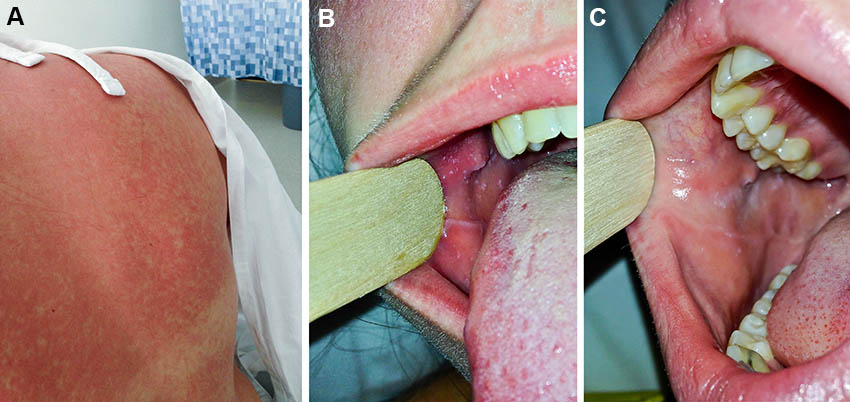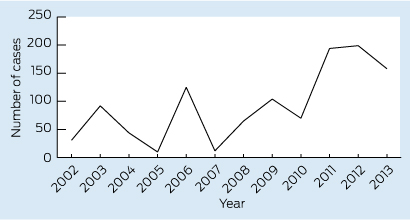Your AMA has been active on policy and in the media on a range of issues crucial to making our health system better. Below is a snapshot of recent media coverage.
Print/Online
E-health record scheme a $1b flop, Hobart Mercury, 27 February 2015
The botched Personally Controlled Electronic Health Record program has been operating for nearly three years but fewer than one in 10 Australians has one. AMA President A/Professor Brian Owler said the scheme remains in limbo, and to have spent that much money and yet still not have anything of widespread value was terrible.
Upfront payments for doctors, Australian Financial Review, 3 March 2015
Health Minister Sussan Ley could end Medicare’s universal “fee for service” approach and pay GPs a lump sum per patient, rather than for each visit. Ms Ley has been in constant contact with AMA President A/Professor Brian Owler about potential changes to Medicare.
Dumped policy to cost $1bn, The Australian, 4 March 2015
Tony Abbott has dumped the GP co-payment but maintained a freeze on Medicare payments to general practitioners. AMA President A/Professor Brian Owler warned the freeze would force bulk billing rates down and increase out-of-pocket expenses for private health insurance policyholders.
Medicare rebate freeze to stay, Australian Financial Review, 4 March 2015
The Federal Government will keep more than $1 billion by freezing indexation of Medicare rebates, but has dumped the GP co-payment. AMA President A/Professor Brian Owler welcomed the decision to axe the co-payment, but said keeping the Medicare rebate indexation freeze was lazy reform.
Ley rules out bulk billing means test, Australian Financial Review, 5 March 2015
Health Minister Sussan Ley has ruled out means testing bulk billing as fix in the search for savings to replace the dumped $5 GP co-payment. The Minister said the Government will persist with its search for policies that would impose a value signal on Medicare. AMA President A/Professor Brian Owler said he was happy to co-operate with Ms Ley but did not agree a price signal had a place in primary care.
Don’t be shy about health, MX Sydney, 5 March 2015
New research shows Australians are still choosing to suffer in silence, instead of talking about an awkward health problem. AMA Chair of General Practice Dr Brian Morton said self-treating basic conditions is fine, but alarm bells should ring if the conditions are recurring.
Co-payment could still happen as GP gap-fee option considered, The Age, 9 March 2015
Despite declaring its Medicare co-payment dead, the Government is considering proposals to give GPs the option of charging gap fees for bulk billed patients. AMA President A/Professor Brian Owler said the AMA had long supported such a change, which he said would benefit patients who are currently privately billed.
Why we can’t keep trusting celebrity diet books, Women’s Weekly, 10 March 2015
AMA Vice President Dr Stephen Parnis said we live in an era where people sometimes equate celebrity with expertise, which is not the case. At best, alternative health and diet advocates may advocate something which is supposed to be therapeutic, but actually has no effect. But, at worst, it can be dangerous, he warned.
‘Price signal’ would hit old, poor hardest, The Age, 19 March 2015
Patients who visit the doctor most often tend to be older and poorer than those who visit their GP less, and would be hardest to hit by the introduction of a price signal. AMA President A/Professor Brian Owler said the data undermined the arguments of some proponents of a Medicare co-payment.
Valley of the unwell, The Herald Sun, 19 March 2015
The Goulburn Valley has emerged as the sickest spot in Victoria, with more than one in six residents seeing a GP more than 12 times a year. AMA President A/Professor Brian Owler said the report showed people who most frequently visited their GP have complex and chronic conditions.
Make vaccination law, The Sunday Telegraph, 22 March 2015
The Sunday Telegraph has launched a national campaign for pregnant women to get free whooping cough boosters in the third trimester. AMA President A/Professor Brian Owler called on Federal Health Minister Sussan Ley to fund the boosters.
Call to name medical ‘bad apples’, Sydney Morning Herald, 24 March 2015
Medical specialists who charge exorbitant fees should be named and shamed in a bid to rein in excessive charging. AMA Vice President Dr Stephen Parnis said more doctors than ever were accepting fees set by private health insurers, and almost 90 per cent of privately insured medical services were delivered with no out-of-pocket cost to the patient.
Doctors to anti-vaxxers: you’re endangering kids, The News Daily, 24 March 2015
AMA Vice President Dr Stephen Parnis told The News Daily that anti-vaccination groups don’t know better than the weight of evidence from the medical and scientific profession.
Misogyny in medicine: don’t put up with it, The Age, 25 March 2015
AMA President A/Professor Brian Owler said he was proud of Australia’s medical profession and added it was challenging to hear assertions that doctors were acting in unacceptable ways, particularly when it came to sexual harassment.
Radio
A/Professor Brian Owler, 666 ABC Canberra, 18 February 2015
AMA President A/Professor Brian Owler talked about the proposed $5 cut to Medicare rebates and the prospect of a $5 co-payment for GP visits still on the table. A/Professor Owler said the idea floated by the Federal Government had not been raised with him.
Dr Stephen Parnis, Radio Adelaide, 23 February 2015
AMA Vice President Dr Stephen Parnis said he was concerned about the Trans-Pacific Partnership trade agreement and what it could mean for affordable health care, with fears it could raise the cost of drugs and limit access to biological agents used in treatments.
A/Professor Brian Owler, 666 ABC Canberra, 3 March 2015
AMA President A/Professor Brian Owler discussed the Federal Government’s decision to abandon the GP co-payment. A/Professor Owler said it was a good result for GPs and their patients because the policy was poorly designed.
A/Professor Brian Owler, Radio National, 3 March 2015
AMA President A/Professor Brian Owler talked about the Federal Government dumping the Medicare co-payment. A/Professor Owler said the AMA would not support a mandatory price signal, but did not see it as unreasonable for patients who can afford it to make a modest contribution to the cost of their care.
A/Professor Brian Owler, 4BC Brisbane, 31 March 2015
AMA President A/Professor Brian Owler talked about the Federal Government changing aviation rules to require two people in a cockpit at all times. The AMA is not sold on the idea of doctors who treat pilots being able to break doctor-patient confidentiality if they think a pilot is unfit to fly.
Television
A/Professor Brian Owler, ABC News 24, 3 March 2015
AMA President A/Professor Brian Owler talked about the Government dumping the GP co-payment. A/Professor Owler said the tragedy of this whole negotiation period was that other pressing health issues had been neglected.
A/Professor Brian Owler, Sky News, 3 March 2015
AMA President A/Professor Brian Owler discussed the dumped Medicare co-payment and the Medical Research Future Fund.
A/Professor Brian Owler, Channel 9, 17 March 2015
AMA President A/Professor Brian Owler discussed suggestions that teenagers should undergo a psychological assessment before any cosmetic surgery. A/Professor Owler said cosmetic surgery was the source of a number of patient complaints.

 more_vert
more_vert
